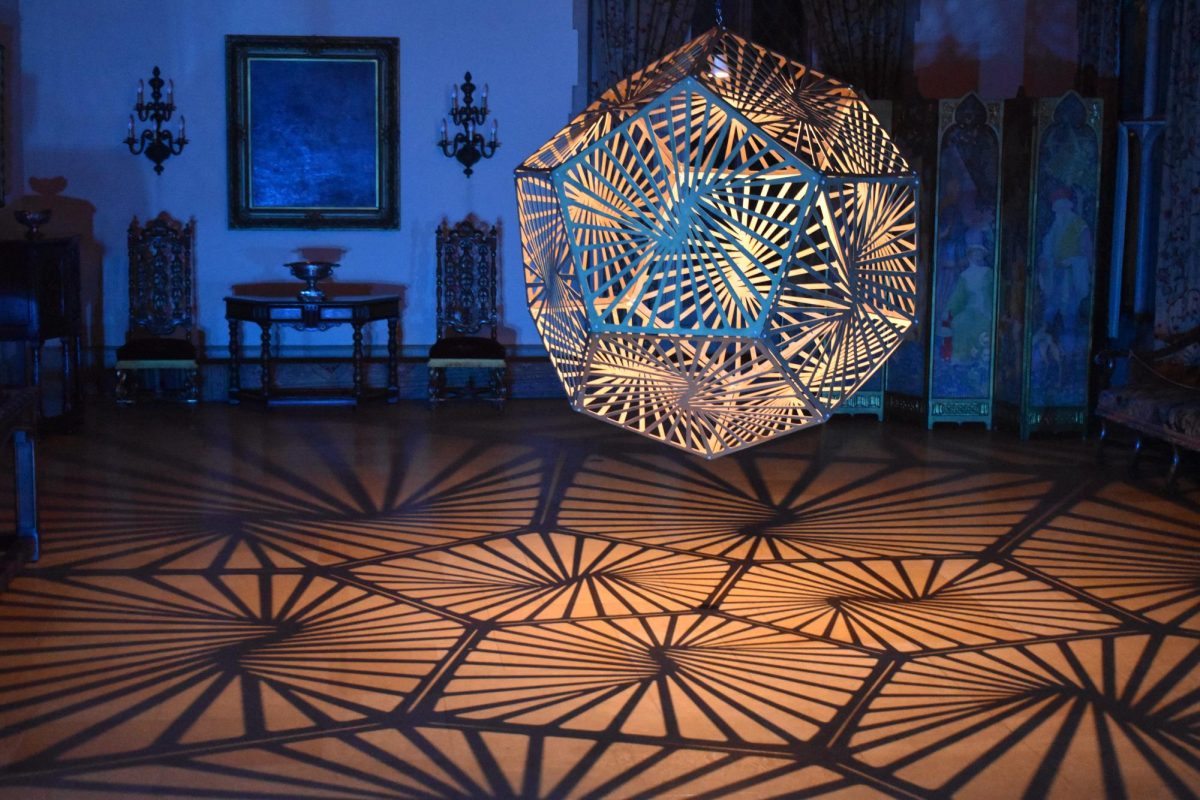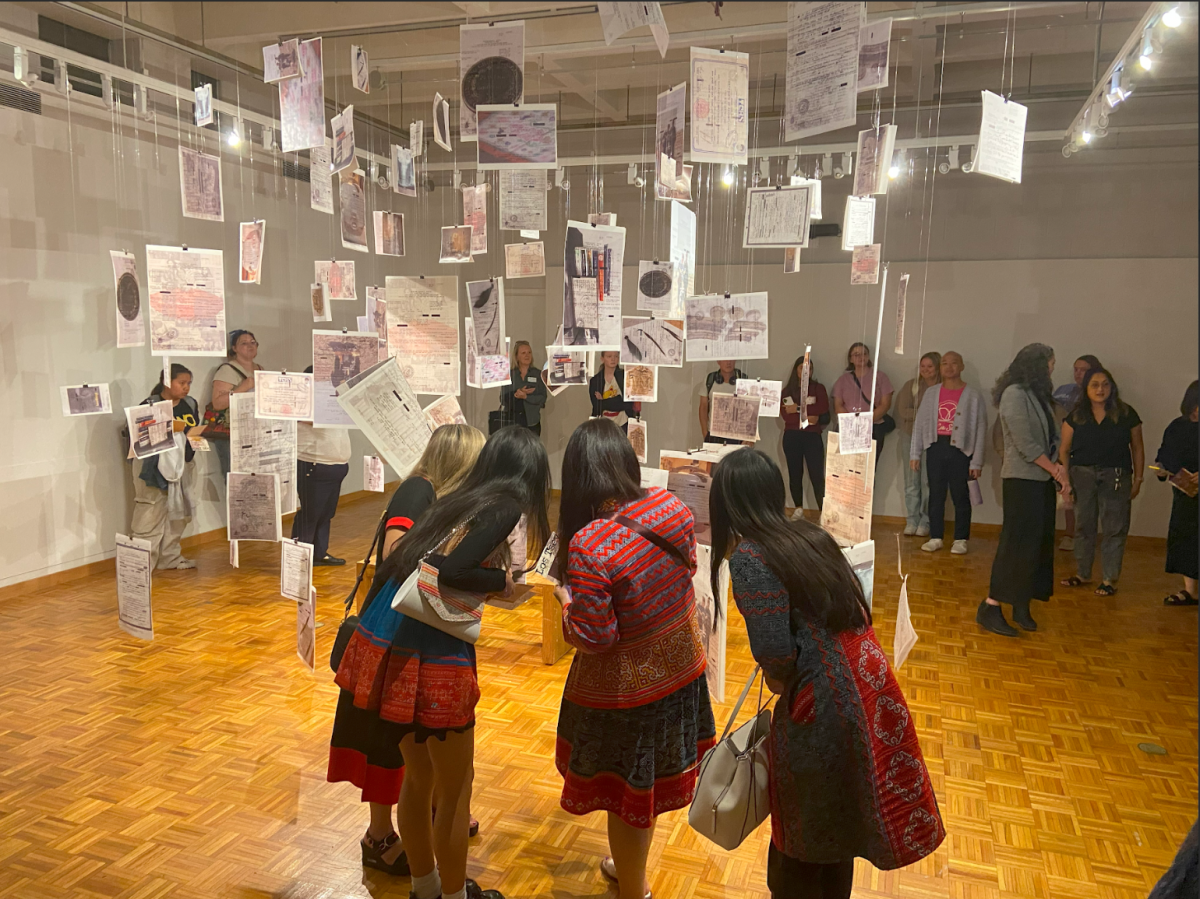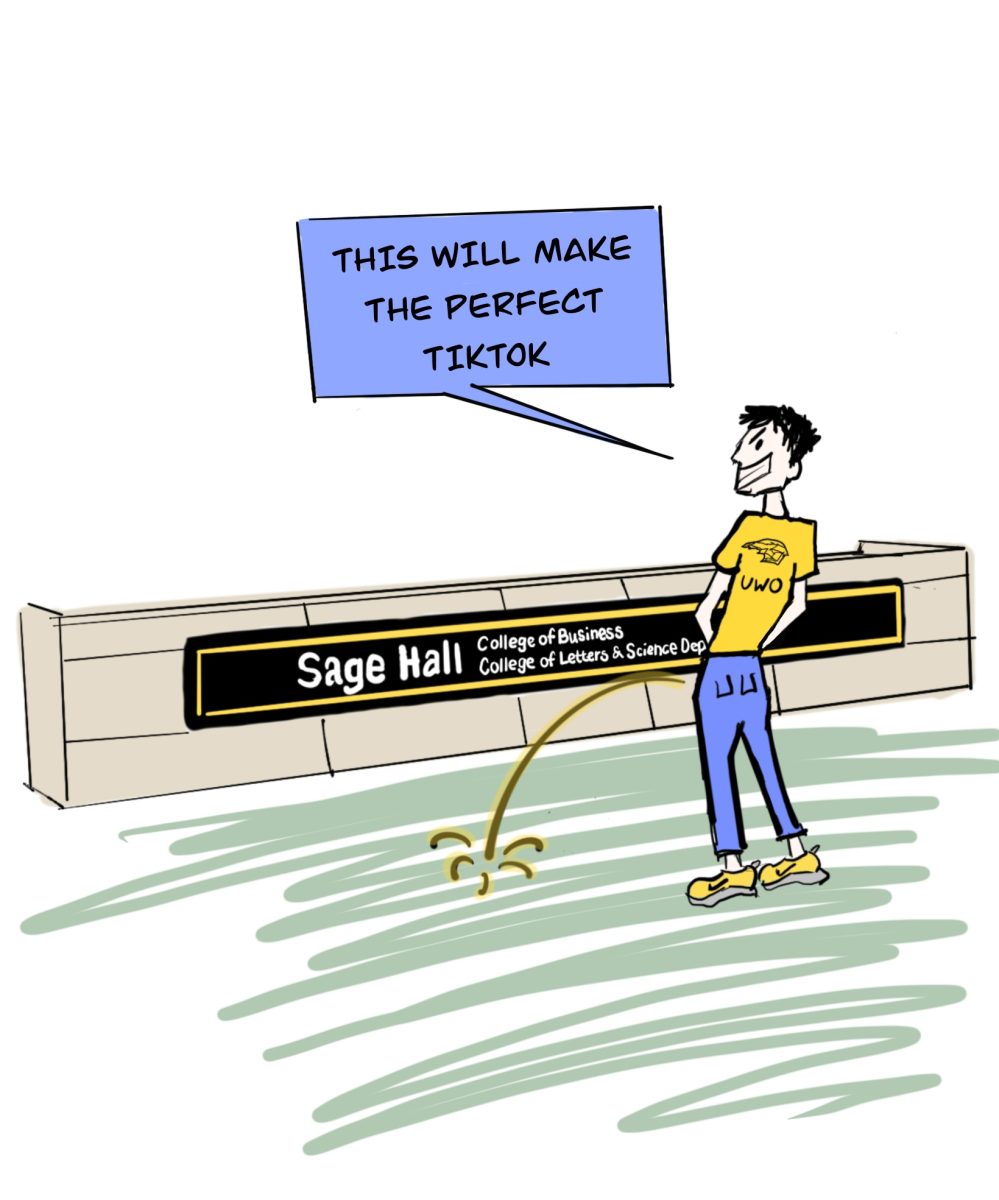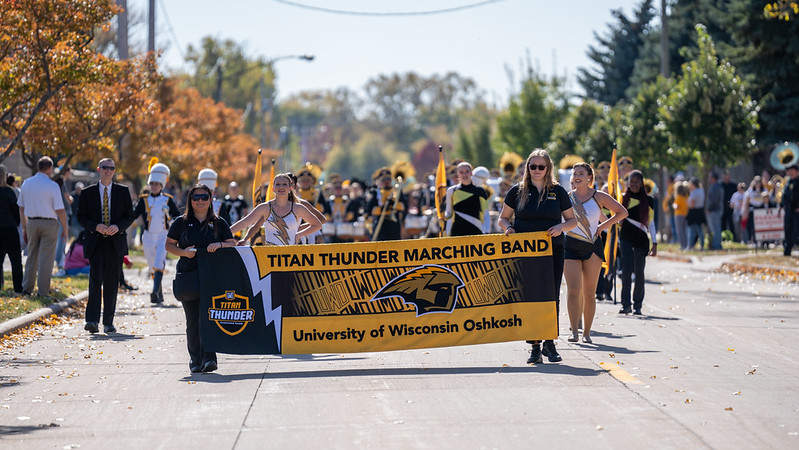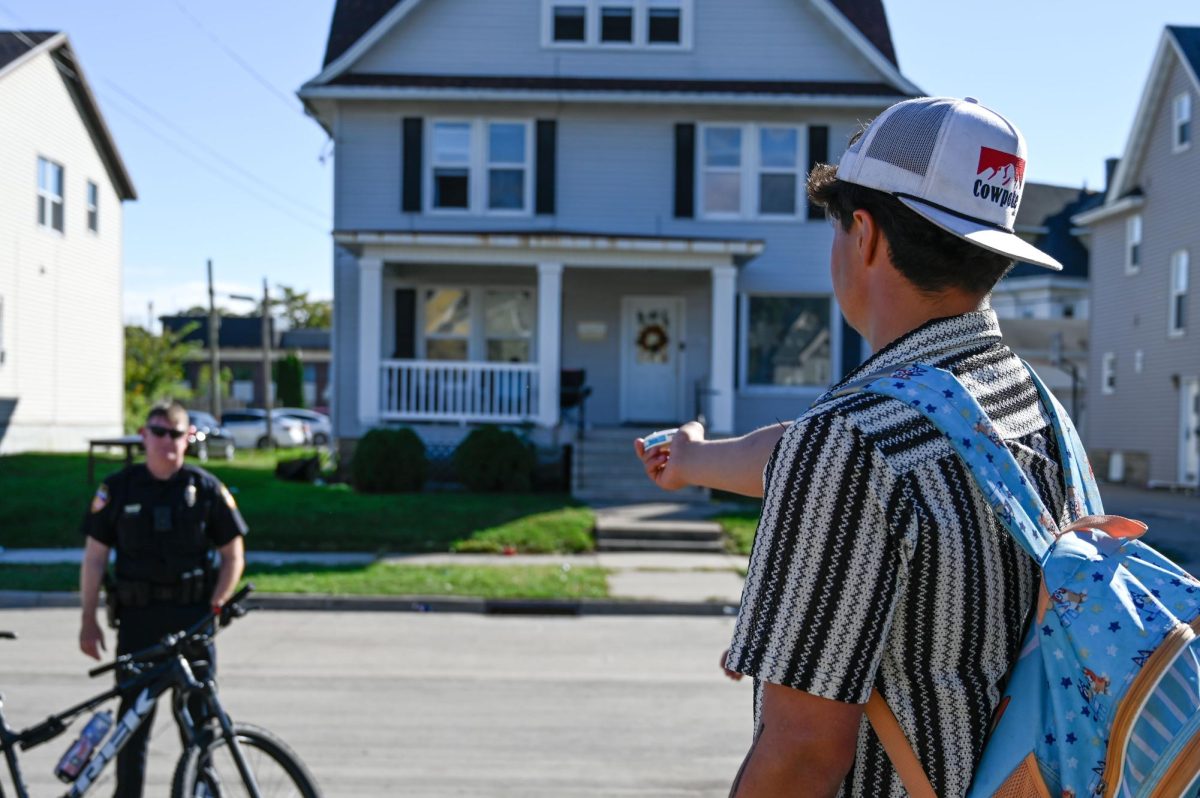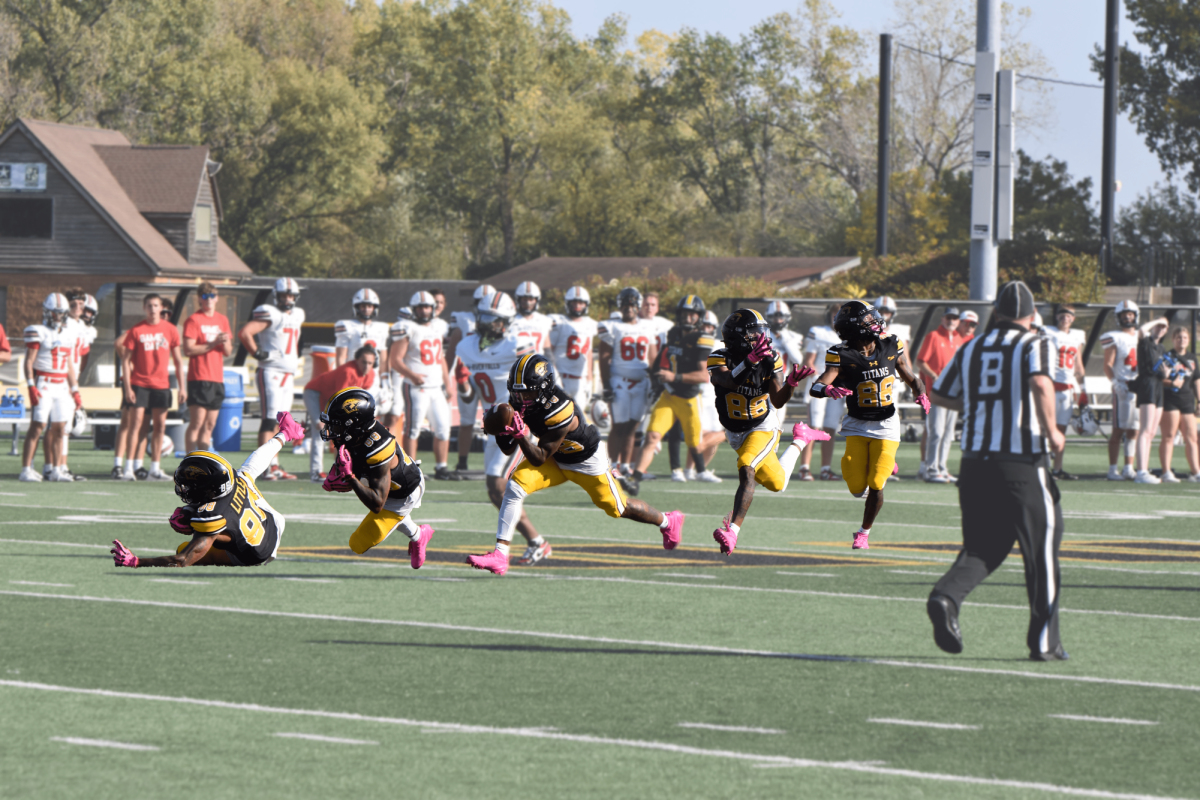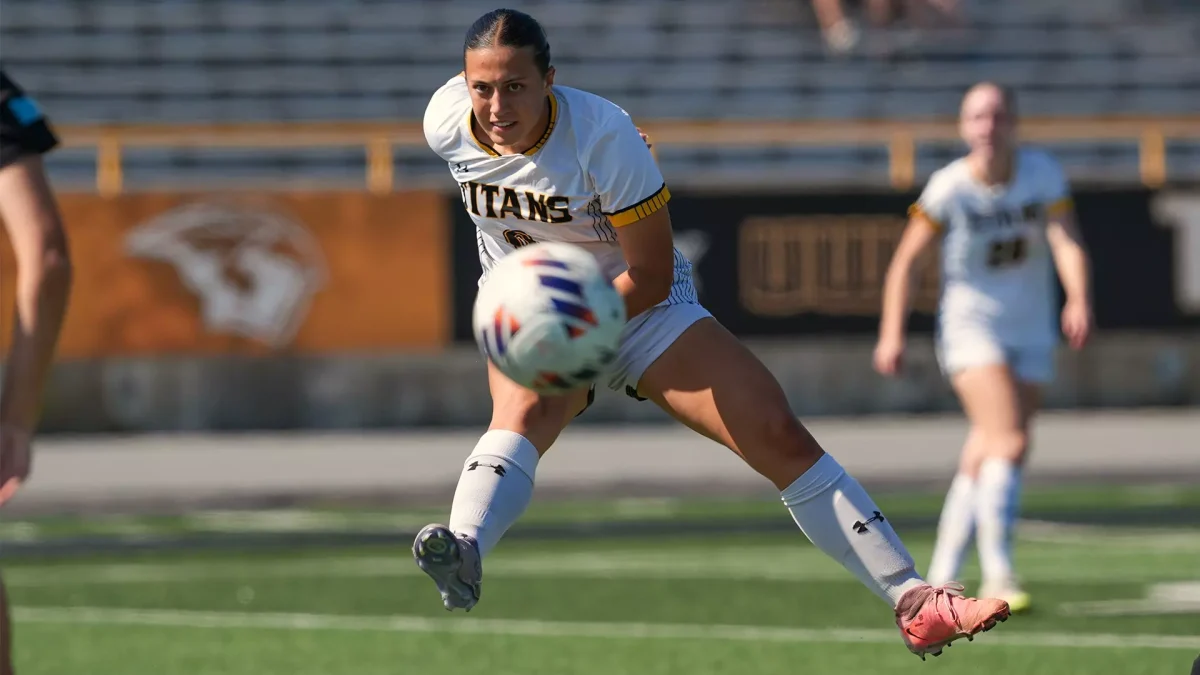
Augmento, UW Oshkosh’s first fictional superhero, was featured in a comic strip of the same name in the Advance-Titan created by UWO alumni in the ’70s. The series, which started as a hobby for three friends, became a form of edgy rebellion, creativity and expression for opinions on people and things around campus.
Meet the cast
University Archivist and Head of Public Services Joshua Ranger interviewed the creators to understand the inspiration of “Augmento” in fall 2020 for the Campus Stories Oral History Project.
The project was a multi-year project designed to collect the memories of UWO alumni, faculty and staff by documenting the past 65 years of campus history. The interviews can be found throughout this story.
Now, let’s meet our heroes.
Bill Bukowski – Native of Wisconsin Rapids.
From 1972-74, Bukowski was an art student at UWO. He is the original creator of Augmento and aspired to be a professional artist.
“I remember consciously in kindergarten I was always an artist,” Bukowski said. “I was trying to decide if I should go into film or art (in high school). I kind of flipped a coin and decided art. I wanted to be a comic book artist when I came to Oshkosh. It just seemed like the right thing.”
Mark Gruenwald – Oshkosh born and raised. Died Aug. 12, 1996, in Pawling, New York.
Gruenwald joined Bukowski in developing “Augmento” into a more elaborate comic strip. His encyclopedic knowledge on comics contributed to his impressive storytelling.
“In high school he was very much into comics when I first met him,” Gruenwald’s high school friend J. Mark Madison said. “He had a lot of (comics). He had these shelves, and each one in a special plastic sleeve. He was attracted by storylines and by the artistry of it.”
Rick Gilbertson – Hailed from near Columbus, Wisconsin.
Gilbertson, a music major, was Bukowski’s college roommate and was the inspiration for the look of Augmento with his “good looks” and “curly locks.”
“I guess my fame comes from Augmento, but that was really my best friend at the time and roommate who drew the comic strip,” Gilbertson said. “I was basically just the face that he thought had comic potential.”
In the beginning . . .
The Arts and Communications Center (A&C) opened in 1971 and hosted the fields of visual and performing arts, theater, broadcasting and music. Many artists and performers found their place in the fine arts department headquartered in A&C.
Some of these creative students included Bukowski and Gruenwald. One of their finest collaborations was Augmento, UWO’s first comic superhero.
The comic strip first started as a hobby of Bukowski’s as he worked as an artist for the Advance-Titan.
Before joining the A-T, Bukowski worked both in the cafeteria and as a janitor in Nelson Hall in an attempt to use his work study. He hated both of those jobs and sought other opportunities.
“I went to the Advance-Titan and said ‘Hey, can I draw for work study?’ and they said ‘Sure.’ So, then I was doing illustrations and eventually started the Augmento comic strip,” Bukowski said.
He modeled Augmento off his roommate Gilbertson not only from his looks.
“We actually came up with the name Augmento from my music theory dictionary, paging through and finding what looked like it had interest in terms of humor,” Gilbertson said. “Augmentation was one of the (words) we came up with. An augmented chord shortened to Augmento.”
Episode 1 of the comic strip was released on Feb. 1, 1973 that introduced Augmento. The strip details meeting Murray Marquardt and his happenings upon a misplaced pitch-pipe that he found in an “ancient volume” in the library. He blew a high C note on the pipe and he turned Augmento: defender of justice.
Augmento was an “anti-hero” who lived in a world similar to students. The comic strip oftentimes included personalities around campus, including Roger Guiles, who held the chancellor position from 1959-73. The A-T’s edgy reputation at the time was shown through the light roasting in the comics.
All of a sudden . . .

After the printing of 11 episodes, the A-T canceled the Augmento comic strip in fall 1973. While the editor of the paper blamed a “paper shortage,” Bukowski figured otherwise. A character named Nympho was featured in comics mildly relating to sexism and misogyny from Augmento, which led to the hero’s demise.
In 1974, Augmento returned to the A-T as a collaboration between Bukowski and Gruenwald. The pair saw great potential and found a creative outlet in the comic.
“Mark and I met in a life drawing class in the art building,” Bukowski said. “He was a very friendly young man and we both eventually found out that we enjoy comics. He was one of the most creative people I’ve ever met. He had so many ideas and so he was very serious about Augmento, and before we got started, he already had the whole script done.”
Bukowski realized that individually, he lacked the ability to make more complex storylines. And that’s where Gruenwald came in. The pair restarted the comic by addressing Augmento’s earlier sexism.
They tried to make amends with the character Nympho with the introduction of Iron Maiden, a force of women’s liberation and adversary. She made appearances dueling with Augmento in the comics and in a radio drama play on WRST, UWO’s student radio station.
Not long after . . .
In spring 1975, Bukowski transferred to Mankato State University, which left Gruenwald with Augmento. He introduced a cast of characters with diverse racial and sexual identities.
One of those characters included homosexual superhero Kellery Tiel, a.k.a. “The Gay Blade,” who came to Augmento’s defense and saved the day in the comic strip’s final battle. Tiel was introduced to the comic when industry code banned mainstream comics from depicting homosexual characters and themes.
“I think he liked to be cutting edge and if that was going to be what was happening, he’s right there,” Bukowski said. “He liked to use anything he could in order to tell the story . . . to be interesting or relevant.”
The strip ran until Gruenwald’s graduation in December 1975. It seemed like this was Augmento’s last appearance in the A-T, but he resurfaced in the paper multiple times thereafter.
Bukowski and Gruenwald stayed in contact for many years after.
What became of the heroes after graduating
Gruenwald never lost interest in comics and upon graduating, moved to New York City.
He wrote a book, “A Treatise on Reality in Comic Literature,” in which he coined the word “omniverse.” He developed a fanzine – traditionally a magazine produced by an amateur – on the study of the timelines of omniverses, metaverses and more.
Marvel Comics saw his work and hired him as a penciler, writer and eventually, executive editor. As a writer, he had cameos of himself and Augmento in his work.
Gruenwald was the creator and sole author of Marvel’s “New Universe D.P.7,” which featured a whole new set of characters, unrelated to previous heroes and villains. The “displaced paranormals” he wrote about were largely Wisconsin-based and the series began in the fictional Winnebago County General Hospital.
Gruenwald died of a heart attack at age 43. He was honored in the Disney+ Loki series through the character Mobius M. Mobius, played by Owen Wilson, who was styled after Gruenwald.
Bukowski grew in his aspirations of becoming a professional artist and became an art professor at Bethany Lutheran College in 1980.
Oftentimes, he would visit Gruenwald in New York and bring his students.
“I would take a group of 10 (students) to New York City,” Bukowski said. “Mark would arrange a visit to Marvel when he was still alive. The first time we came, he had a guy dressed like Spiderman to give us a tour.”
Bukowski said he and Guenwald always stayed close, but he didn’t think Gruenwald understood why he left comic books.
In his art career, Bukowski participated in 175 Midwestern exhibitions and designed altarpieces and religious paintings for churches across the U.S.
He retired from teaching after 40 years and donated his original Augmento collection to the UWO Archives and Area Research Center in 2020.
Gilbertson started a career as a musician after graduating, and later became a mailman for the U.S. Postal Service.
After retiring from the USPS, he continues to perform music. He runs a Facebook page for Augmento, his alter ego, sharing memories from those glory days.
While the Augmento comic series ended its time in the A-T and at UWO, its legacy lives on through the memories.
“I do think those times in Oshkosh were very creative and very exciting,” Bukowski said. “I think as a university, they should be proud of those times. (Great things) can happen in Oshkosh – you don’t have to be in New York or on the East or West coast.”Augmento, UW Oshkosh’s first fictional superhero, was featured in a comic strip of the same name in the Advance-Titan created by UWO alumni in the ’70s. The series, which started as a hobby for three friends, became a form of edgy rebellion, creativity and expression for opinions on people and things around campus.
In the beginning . . .
The Arts and Communications Center (A&C) opened in 1971 and hosted the fields of visual and performing arts, theater, broadcasting and music. Many artists and performers found their place in the fine arts department headquartered in A&C.
Some of these creative students included Bukowski and Gruenwald. One of their finest collaborations was Augmento, UWO’s first comic superhero.
The comic strip first started as a hobby of Bukowski’s as he worked as an artist for the Advance-Titan.
Before joining the A-T, Bukowski worked both in the cafeteria and as a janitor in Nelson Hall in an attempt to use his work study. He hated both of those jobs and sought other opportunities.
“I went to the Advance-Titan and said ‘Hey, can I draw for work study?’ and they said ‘Sure.’ So, then I was doing illustrations and eventually started the Augmento comic strip,” Bukowski said.
He modeled Augmento off his roommate Gilbertson not only from his looks.
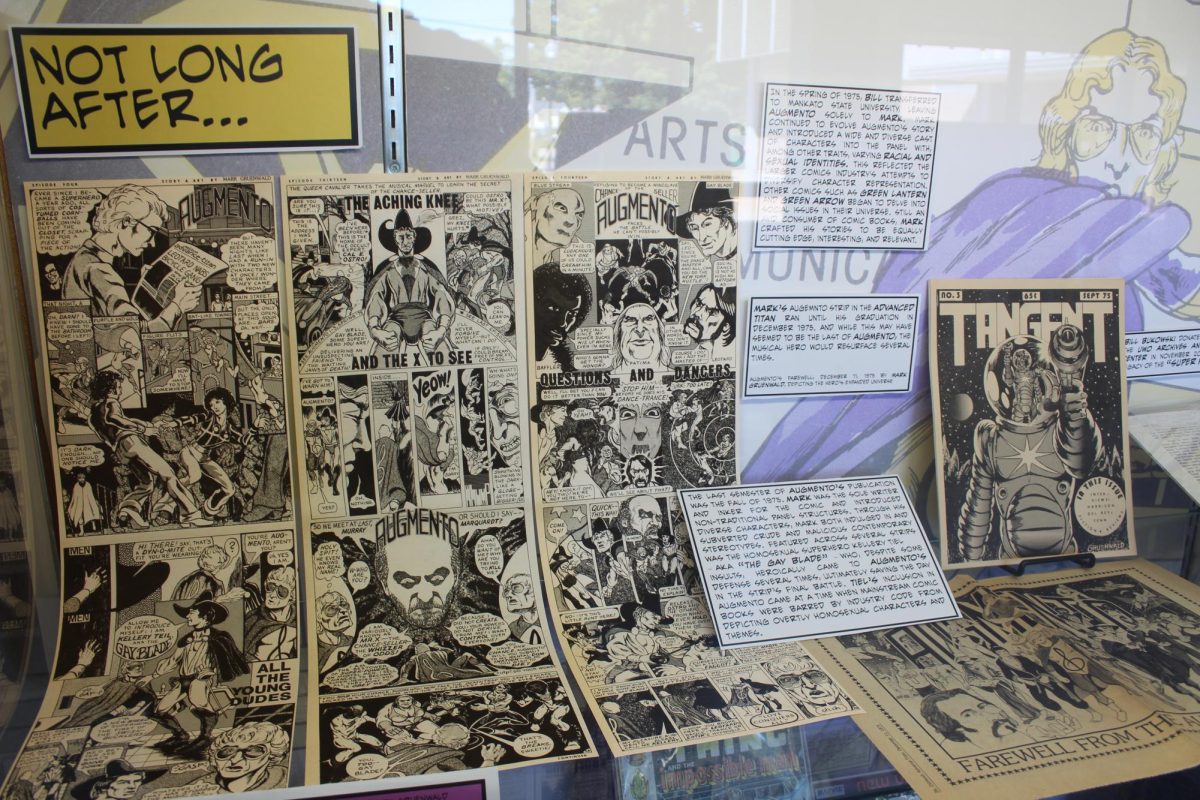
“We actually came up with the name Augmento from my music theory dictionary, paging through and finding what looked like it had interest in terms of humor,” Gilbertson said. “Augmentation was one of the (words) we came up with. An augmented chord shortened to Augmento.”
Episode 1 of the comic strip was released on Feb. 1, 1973 that introduced Augmento. The strip details meeting Murray Marquardt and his happenings upon a misplaced pitch-pipe that he found in an “ancient volume” in the library. He blew a high C note on the pipe and he turned Augmento: defender of justice.
Augmento was an “anti-hero” who lived in a world similar to students. The comic strip oftentimes included personalities around campus, including Roger Guiles, who held the chancellor position from 1959-73. The A-T’s edgy reputation at the time was shown through the light roasting in the comics.
All of a sudden . . .
After the printing of 11 episodes, the A-T canceled the Augmento comic strip in fall 1973. While the editor of the paper blamed a “paper shortage,” Bukowski figured otherwise. A character named Nympho was featured in comics mildly relating to sexism and misogyny from Augmento, which led to the hero’s demise.
In 1974, Augmento returned to the A-T as a collaboration between Bukowski and Gruenwald. The pair saw great potential and found a creative outlet in the comic.
“Mark and I met in a life drawing class in the art building,” Bukowski said. “He was a very friendly young man and we both eventually found out that we enjoy comics. He was one of the most creative people I’ve ever met. He had so many ideas and so he was very serious about Augmento, and before we got started, he already had the whole script done.”
Bukowski realized that individually, he lacked the ability to make more complex storylines. And that’s where Gruenwald came in. The pair restarted the comic by addressing Augmento’s earlier sexism.
They tried to make amends with the character Nympho with the introduction of Iron Maiden, a force of women’s liberation and adversary. She made appearances dueling with Augmento in the comics and in a radio drama play on WRST, UWO’s student radio station.
Not long after . . .
In spring 1975, Bukowski transferred to Mankato State University, which left Gruenwald with Augmento. He introduced a cast of characters with diverse racial and sexual identities.
One of those characters included homosexual superhero Kellery Tiel, a.k.a. “The Gay Blade,” who came to Augmento’s defense and saved the day in the comic strip’s final battle. Tiel was introduced to the comic when industry code banned mainstream comics from depicting homosexual characters and themes.
“I think he liked to be cutting edge and if that was going to be what was happening, he’s right there,” Bukowski said. “He liked to use anything he could in order to tell the story . . . to be interesting or relevant.”
The strip ran until Gruenwald’s graduation in December 1975. It seemed like this was Augmento’s last appearance in the A-T, but he resurfaced in the paper multiple times thereafter.
Bukowski and Gruenwald stayed in contact for many years after.
What became of the heroes after graduating
Gruenwald never lost interest in comics and upon graduating, moved to New York City.
He wrote a book, “A Treatise on Reality in Comic Literature,” in which he coined the word “omniverse.” He developed a fanzine – traditionally a magazine produced by an amateur – on the study of the timelines of omniverses, metaverses and more.
Marvel Comics saw his work and hired him as a penciler, writer and eventually, executive editor. As a writer, he had cameos of himself and Augmento in his work.
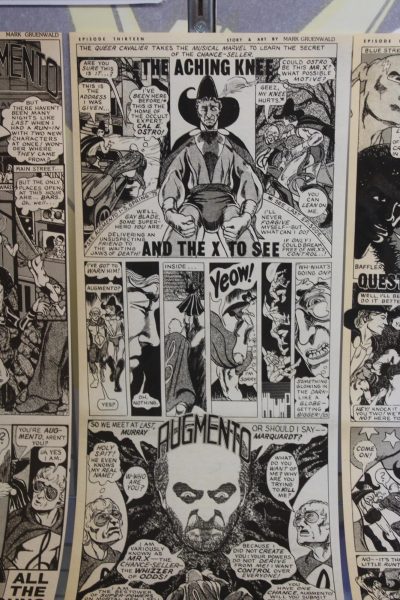
Gruenwald was the creator and sole author of Marvel’s “New Universe D.P.7,” which featured a whole new set of characters, unrelated to previous heroes and villains. The “displaced paranormals” he wrote about were largely Wisconsin-based and the series began in the fictional Winnebago County General Hospital.
Gruenwald died of a heart attack at age 43. He was honored in the Disney+ Loki series through the character Mobius M. Mobius, played by Owen Wilson, who was styled after Gruenwald.
Bukowski grew in his aspirations of becoming a professional artist and became an art professor at Bethany Lutheran College in 1980.
Oftentimes, he would visit Gruenwald in New York and bring his students.
“I would take a group of 10 (students) to New York City,” Bukowski said. “Mark would arrange a visit to Marvel when he was still alive. The first time we came, he had a guy dressed like Spiderman to give us a tour.”
Bukowski said he and Guenwald always stayed close, but he didn’t think Gruenwald understood why he left comic books.
In his art career, Bukowski participated in 175 Midwestern exhibitions and designed altarpieces and religious paintings for churches across the U.S.
He retired from teaching after 40 years and donated his original Augmento collection to the UWO Archives and Area Research Center in 2020.
Gilbertson started a career as a musician after graduating, and later became a mailman for the U.S. Postal Service.
After retiring from the USPS, he continues to perform music. He runs a Facebook page for Augmento, his alter ego, sharing memories from those glory days.
While the Augmento comic series ended its time in the A-T and at UWO, its legacy lives on through the memories.
“I do think those times in Oshkosh were very creative and very exciting,” Bukowski said. “I think as a university, they should be proud of those times. (Great things) can happen in Oshkosh – you don’t have to be in New York or on the East or West coast.”




